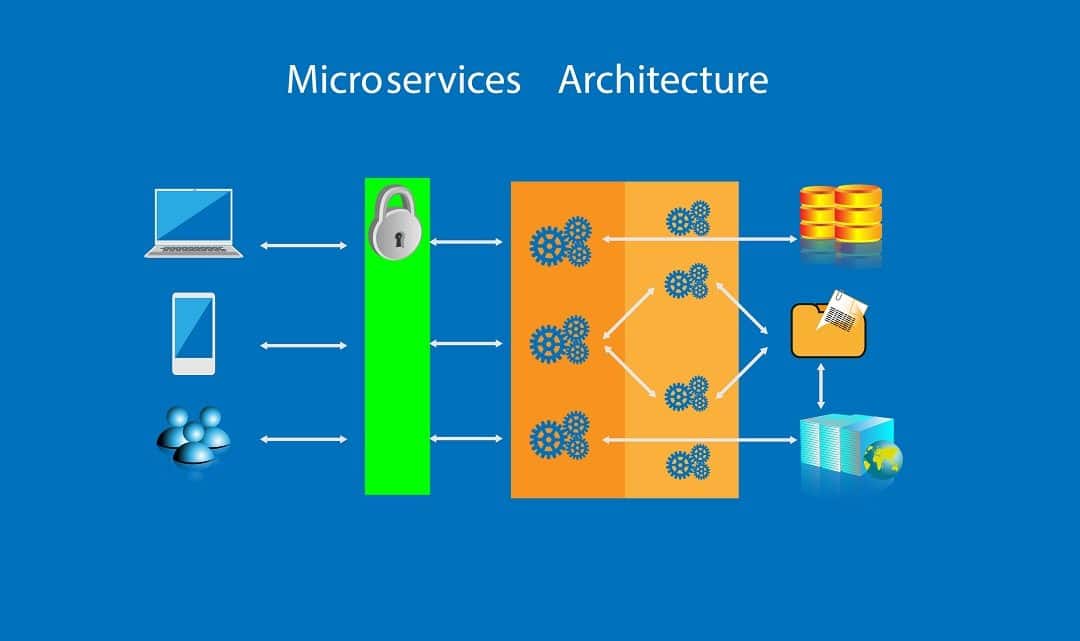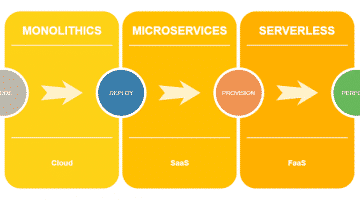What is Microservices Architecture?
At its core, a microservices architecture is one that structures an application not as one large entity, but as a series of smaller and more independently deployable services
So rather than looking at an application as one large piece of software, it instead shifts things towards an environment where that same app is made up of multiple smaller, singularly focused services. Each service can be developed, tested and deployed individually, all while still adding up to the larger “whole” that developers (and their end users) need them to be.
When to Use (and When Not to Use) Microservices
In general, you should always consider using a microservices infrastructure when you have an existing monolithic application that you want to adjust to accommodate scalability, agility, delivery speed and other elements that have become important to your success over time. This can be especially helpful in the case of a legacy application that is successful, but that still needs to be updated to bring it more in line with the expectations of modern users and their needs.
Likewise, any situation where you’re building a highly agile application that depends on both innovation and speed of delivery would be a good candidate for a microservices infrastructure.
On the other hand, a microservices infrastructure is not a good idea if you don’t actually have a team large enough to handle the number of tasks required. Likewise, not all applications need to be broken down into a series of smaller and more manageable services – at least not yet – so microservices likely wouldn’t be a priority for you in the short-term.
Benefits of a Microservices Architecture
As stated, Microservices bring with them a wide array of different advantages that cannot be ignored, like:
- Thanks to the inherent simplicity in microservices, applications become far easier to build and even easier to maintain. Because each microservice is essentially its own unique portion of code, actions in one area don’t impact another part of the app. Certain services within the same app can even be written in different programming languages, databases or software environments should the need arise.
- Microservices are also known for their massive improvements in terms of both productivity and speed for development professionals. In other words, you don’t have to wait for the monolith to be “finished” before rolling out your application to end users. You can develop and deploy those individual services without having to wait for everything else to be “finished.” This also helps empower teams in terms of quality assurance, since each microservice can be tested on an individual basis.
- Finally, microservices are by their nature organized around business capabilities – which itself is a blessing for both software developers and the end users they’ve dedicated themselves to serving. Microservices are adaptable in multiple contexts, meaning that you can easily re-use the same service in more than one business process. This development methodology also results in smarter, more cross-functional teams – leading to a higher quality finished product across the board.
Advantages of Microservices Architecture in a COVID-19 World
In an era where more people are working remotely than ever due to the ongoing COVID-19 pandemic, a microservices architecture is also a viable way to empower the autonomous, cross-functional teams that most organizations currently find themselves working with.
Remember that microservices give developers more independence to work autonomously, as each service can be independently designed, developed, maintained and deployed. Working with a true monolithic system would be next to impossible with teams spread out around the country or even the world. The actions of one developer could negatively impact the activities of another and bringing everyone together in a truly collaborative manner with everyone so spread out would quickly become an uphill battle.
The advantages of microservices, on the other hand, mean that smaller and more niche teams can focus on core aspects of the application before eventually bringing everything together to form that larger whole. They can make technical decisions faster and work totally independently from one another, all while still contributing meaningfully to the finished product.
Examples of Industries That Have Swiftly Changed Functionalities During COVID-19
Indeed, the impact of COVID-19 may have accelerated the global adoption of microservices in a way that few could have predicted – something that is continuing to play out in real-time.
The healthcare industry, for example, has long been interested in microservices as a way to enhance and support customer-oriented businesses, as well as for their opportunity to increase project delivery speed. But with more people experimenting with tele-health services than ever with millions of Americans under stay-at-home orders and healthcare organizations closed to all non-essential activities, this development methodology has only ramped up even further.
The global pandemic has also had a major impact on consumer behavior in terms of banking and the financial sector, and experts are already anticipating that this will ignite a major shift in terms of microservices moving forward. Thanks to COVID-19, customers are engaging with banks through digital channels that many of them never even considered previously. This is a trend that is not expected to go away once COVID-19 finally leaves us behind.
Therefore, microservices become the best chance that most organizations have in terms of continuing to support and empower their customers moving forward, regardless of how their behaviors and preferences continue to change and evolve over time.
In the end, microservices have always brought with them a fair share of advantage for software developers everywhere – qualities that have only become more important given the current pandemic taking place around the world. But whether businesses are attempting to inject new functionality into their current apps without giving up on their existing investments, or whether software developers are simply trying to embrace an architecture that allows them to finally work “smarter, not harder,” one core truth remains the same:
Microservices absolutely represent the next “great shift” in terms of an era of smarter and more thoughtfully constructed software development, and current events make it abundantly clear that this could not have come along at a more important time.




